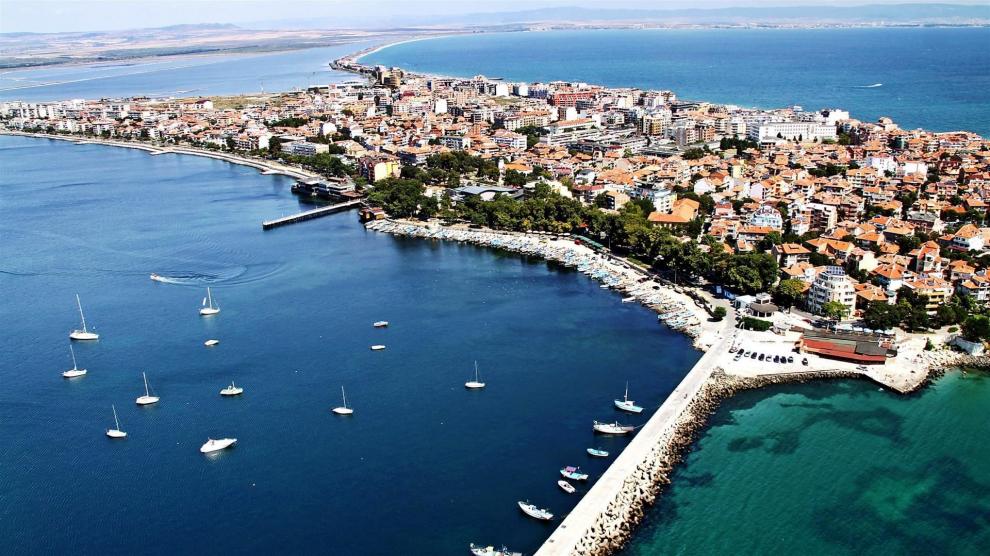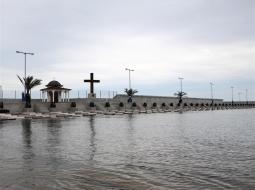Thessaloniki gets ready for its metro launch in November
The underground rapid transit lines have been under construction for almost two decades due to various project delays
 TheMayor.EU logo
TheMayor.EU logo 
The strategic location of the peninsula, located at the centre of the big Burgas Bay has determined its destiny. In the period 1st c. BC – 1st c. AC, Anhialo was already a centre of a strategy (region) in the Odrysian kingdom. With the turning of Thrace into a Roman province began the period of the greatest prosperity of Pomorie. In the Paleokastro (old fortress) area was built one of the largest ancient cities on our lands, named Ulpianon Anhialeon. Throughout the Middle Ages, Pomorie preserved its position as a main transport, commercial and military centre of Black Sea Thrace. This is why the city became the “apple of discord” between Bulgaria and the Roman Empire. As a consequence of a series of military operations on land and sea, the most famous being the battle at the Aheloy River in August 917, when the Byzantine army was defeated by the troops of King Simeon the Great, the town was either within the borders of Bulgaria, or of the Byzantine Empire. Between the 15th and 19th century, Anhialo was one of the two largest salt-making centres in the Ottoman Empire (the other one being Thessaloniki in Greece).
The town of Pomorie is located on the narrow rocky peninsula of the same name, 3.5 km into the Black Sea, at the north-western coast of Burgas Bay. Its area covers 413,304 decares, and the settlements in the municipality are 17. Via Pontica - one of the main bird migration routes from Europe to Africa passes here. The Lake of Pomorie is a protected area - a super-salty natural lagoon with an area of 1,000 hectares. The beach of Pomorie is unique for its fine black sand that is typical only for this region.
The driving sector of the local economy is tourism. Pomorie Municipality boasts its sea, balneo, cultural and eco tourism. The proven healing properties of the unique liman mud, extracted from the salty Pomorie Lake, and the tourist interest in Pomorie as a year-round balneo and SPA destination have boosted its fame as the capital of balneo tourism in Bulgaria. Along with the different types of tourism, the local population is engaged in vine-growing, wine making, salt production and fishing. The sea town has an attractive fishing port.

The best developed type of tourism is the sea tourism. In the summer season more than 100,000 tourists visit the town, attracted by its tranquility, good infrastructure and clean beaches. Pomorie Municipality has a unique natural resource that is well utilized and this is why the town is well known as a balneo resort. It is proven that the quality of the healing liman mud, extracted from the salty lake, is among the best in the world. It is used for disorders of the locomotor system, gynaecological, surgical and traumatic, skin, peripheral nerve disorders, non-specific disorders of the locomotor organs, cardiovascular, liver disorders, etc. Besides the sea and SPA tourism, Pomorie Municipality also relies on cultural tourism, exploiting the town's rich cultural and historical heritage. Rural and ecotourism are the specialty of Goritsa village, Bata village, Kozichino village, Galabets village. There are mineral springs in Kamenar village and Medovo village. Among the tourist sites is the Museum of Salt - one-of-a-kind in Bulgaria and Eastern Europe. It consists of an exhibition hall and 20 decares of functioning salt flats that produce salt in the way it was done in antiquity.
Address: Pomorie 8200, 5 Solna Str.